Listed Buildings
 If you need help and advice with regard to problems with Listed buildings, Specific Defects Reports on property problems such as woodworm, dry rot, wet rot, dampness etc, structural surveys, building surveys, engineers reports, please free to phone 0800 298 5424 for a friendly chat.
If you need help and advice with regard to problems with Listed buildings, Specific Defects Reports on property problems such as woodworm, dry rot, wet rot, dampness etc, structural surveys, building surveys, engineers reports, please free to phone 0800 298 5424 for a friendly chat.
Why have an independent building survey?
Always have an independent building survey as this will highlight any property problems. Caveat emptor means buyer beware and is why you need to have a building survey to find out if there are any problems within the property; the estate agent certainly will not advise you of any.
Remember the building Surveyor that you employ will be the only person working for you with your interests at heart.
Free phone 0800 298 5424
What do the circles and ovals mean in our building surveys?
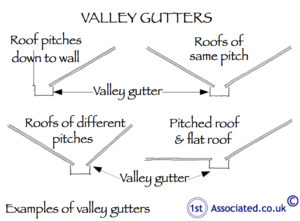
In our building surveys and structural surveys the circles and ovals are a system that we used to highlight property problem areas so that you are not left wondering what the property problem is.
In addition to this if the survey photographs do not we believe explain the property problem enough together with our survey report we also add in one of our own survey sketches
First Listed buildings
The listing of buildings or a structure of special architectural, historical or cultural interest started in 1947 under the Town and Planning Act. There are around 500,000 listed buildings in the United Kingdom. Listed buildings are available on a number of lists in England, Wales and Scotland gathered together by the relevant Government department all of which take recommendations from English Heritage or equivalent such as The Society for the Protection of Ancient Buildings (SPAB).
Listed Buildings what can you do?
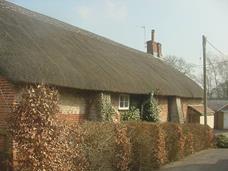
Any building that has a Listing these are Grade I, Grade II* and Grade II cannot in theory be extended, pulled down or changed in any way unless permission is gained from the Local Authority who usually have a specialist in this area but equally may also want to consult other specialist bodies such as The Society for the Protection of Ancient Buildings (SPAB) . Equally there is still work that can be carried out on Listed buildings and in fact is a benefit to be carried out, which is work that is classified as maintenance although you may wish to talk to the Local Authority to clarify what is and is not maintenance.
For example: Re-pointing an old wall in a cement mortar may not be considered as maintenance as a lime mortar should be used.
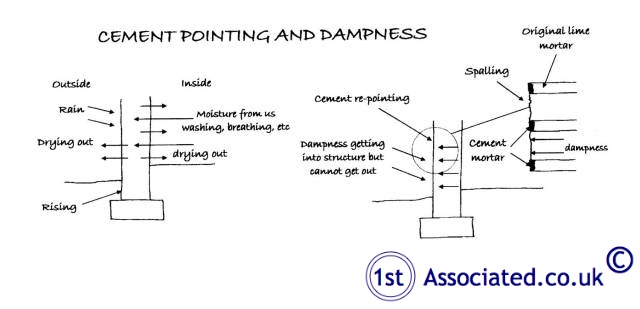 |
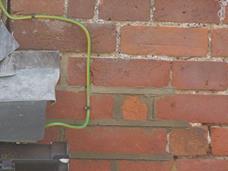 |
|
Dampness and old buildings |
Inappropriate cement mortar will cause damage to soft red bricks |

It should be remembered that it can be classed as a criminal offence if work is carried out on the Listed building without permission.
Good News for Listed Buildings
If you do own a Grade I or Grade II* building then you may be able to apply for a grant from the English Heritage to carry out any urgent major repair work; however we understand that these grants are very limited.
There may also be other funds available if your building is a particularly deserving case.
All sorts of things can be Listed
It is not just houses and buildings that can be Listed other structures such as war memorials, mile posts and mile stones, monuments, bridges and sculptures can also have a Listing and of course we must not forget telephone boxes.
Some more information about Listed Buildings
Before 1700's
Most buildings that are constructed before the 1700's with original construction will be Listed
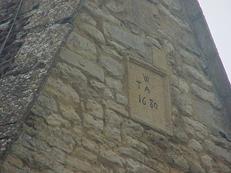 |
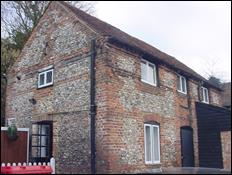 |
|
Colleyweston Stone constructed Listed Building |
Grade II Listed property |
1700's to 1840's
Also the majority of properties that were constructed from 1700 1840 again where the majority of the original construction exists will be Listed often being Grade I or Grade II* buildings.
From1840
From the 1840s it generally tends to be a mixed consideration of both the history of the building and the merit of the type of building. This is because many more buildings of this era are still in existence
Second World War
From about the Second World War onwards the number of buildings listed is considerably reduced and tend to be buildings that have classic design or represent a particular style or era of property.
Criteria for Listing
The following criteria are used to decide which buildings should be listed:
Historic interest, which show aspects of the nation's social, economic, cultural or military history.
Close historical association, for example with important buildings or events.
Group value, such as model villages, squares, terraces etc.
The Different Grading used to List a Building
Grade I:

Grade I buildings are considered to be those that are of exceptional interest.
Grade II*
Grade II* buildings are considered to be particularly important buildings of more than special interest.
Grade II
Grade II buildings are considered to be of special interest, warranting every effort to preserve them.
More than 90 percent of the properties that are listed have been given Grade II status.
Please see our surveying articles on:-
Building Surveys also known as structural surveys
Damp proof courses in older properties
Dampness in buildings, the basics
Independent Surveyors
If you truly do want an independent expert opinion from a surveyor with regard to valuations, mortgages, mortgage companies, surveys, building surveys, structural reports, engineers reports, specific defects report, structural surveys, home buyers reports or any other property matters please contact 0800 298 5424 for a surveyor to give you a call back.
We can email you examples of our structural surveys
We would also be happy to email you some examples of our tailor made reports, Schedules of Condition, Structural Surveys and Property Reports. We can send you examples of Structural Surveys on, we believe, every type of property and era. Property eras are most typically Tudor and Elizabethan, Georgian and Regency, Victorian and Edwardian, War Years, Post War Years, Modern and New.
We have example surveys of every type of commercial property including shops, offices, industrial buildings, leisure buildings such as pubs, sports centres, places of worship and institutional buildings.
